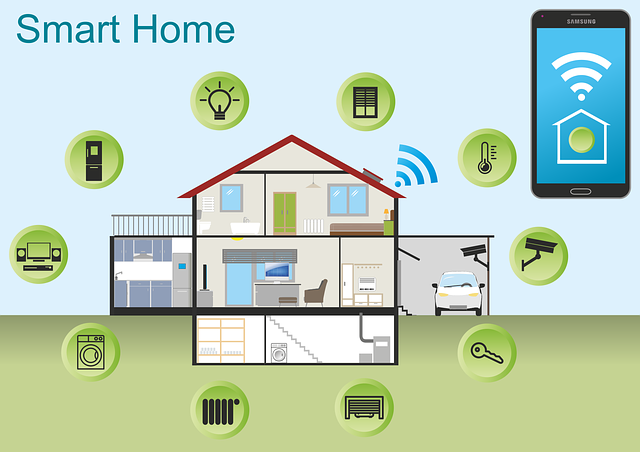
Technology has transformed modern homes, providing advanced solutions that increase convenience while lowering costs. More than just a luxury, smart home technologies maximize energy use, cut utility costs, and improve the living environment. Automated systems reduce waste and increase cost-effectiveness, whether they manage appliances, lighting, or climate control. Investing in smart technology guarantees that every system runs at maximum performance without unnecessary energy use, thus controlling household expenses. The right features transform every house into a cost-effective powerhouse, therefore optimizing daily living and reducing expenses.
1. Smart Thermostats for Precision Climate Control
Home energy usage mostly depends on temperature control; hence a smart thermostat guarantees heating and cooling systems operate only when needed. Unlike conventional models that keep the temperature constant independent of occupancy, these smart devices learn routines and automatically adjust settings. A smart thermostat lowers needless energy use while preserving comfort by seeing when rooms need different temperatures or when a house is empty. Performance is further maximized by combining an effective system for HVAC, for example, with a smart thermostat. An updated system removes extra strain and stops energy waste while it operates with precise climate control. This integration over time yields notable reductions in heating and cooling expenses. Remote access features also let homeowners control temperatures from anywhere, therefore avoiding energy waste when schedules change unexpectedly.
2. Energy-Efficient Smart Lighting for Lower Utility Bills
Especially in empty rooms, traditional illumination adds to the high electricity expenses. Offering automation, motion sensing, and remote access, smart lighting systems solve this problem. These characteristics guarantee lights operate only when needed, therefore cutting electricity costs and energy waste. With longer lifespans and lower electricity consumption than conventional incandescent or fluorescent bulbs, LED smart bulbs further improve efficiency. Certain types adjust brightness depending on the time of day, therefore producing the ideal ambiance with minimum energy consumption. Scheduling capabilities allow homeowners program lights to switch on and off at designated times, preventing unnecessary energy consumption and providing additional security benefits.
3. Smart Power Strips to Eliminate Phantom Energy Waste
Many electronic devices continue to consume energy even when they are turned off, known as “phantom energy drain.” Smart power strips switch off power when inactive gadgets are detected, therefore removing this waste. These smart devices cut total energy expenses by stopping electricity from running to idle devices, unlike conventional power strips. Individual outlet controls included in advanced models help homeowners prioritize important appliances while cutting off electricity to those that don’t need continuous operation. This type of automated power consumption guarantees that appliances, chargers, and entertainment systems—when not in use—do not contribute to higher electricity costs. Eliminating phantom energy waste over time results in obvious savings in household costs generally.
4. Water-Saving Smart Fixtures for Reduced Utility Costs
Although water waste contributes to high utility costs, smart fixtures help control usage without compromising convenience. Sensors in smart faucets, showerheads, and irrigation systems help to manage water flow based on real-time needs, preventing unnecessary usage of extra water. These devices cut total water costs by automatically turning off when they detect inactivity, therefore avoiding waste. Smart irrigation systems go beyond mere efficiency by adjusting watering schedules based on weather conditions. These systems monitor rainfall and soil moisture levels instead of running on a predetermined timer, therefore making sure landscapes receive the right amount of water without unnecessary use. Using smart water-saving technologies enhances sustainable living, reduces utility costs, and prevents water overuse.
5. Intelligent Appliances for Maximum Efficiency
Although smart home technology improves efficiency, household appliances still consume a large amount of energy. Dishwashers, stoves, washing machines, and smart refrigerators adjust energy use depending on load size, time of day, and efficiency settings. Many smart appliances run during off-peak hours, taking advantage of cheaper electricity prices to help cut overall costs. To prevent excessive energy use, some smart refrigerators monitor internal temperatures and adjust cooling levels based on door activity. By optimizing water and detergent levels, washing machines ensure effective cleaning of each load without waste. For maximum energy efficiency, smart ovens adjust cooking times and preheat only when needed. Together, these features reduce water and electricity consumption, allowing homeowners to control costs without sacrificing performance.
Conclusion
Smart home technology greatly lowers household expenses while providing a functional living environment. Together, intelligent climate control, automated lighting, energy-saving power strips, water-efficient fixtures, and high-performance appliances work together to reduce waste and increase cost-effectiveness. Investing in these features guarantees long-term savings while improving convenience and sustainability. A smart-tech house operates effortlessly, saving money without compromising comfort or utility.